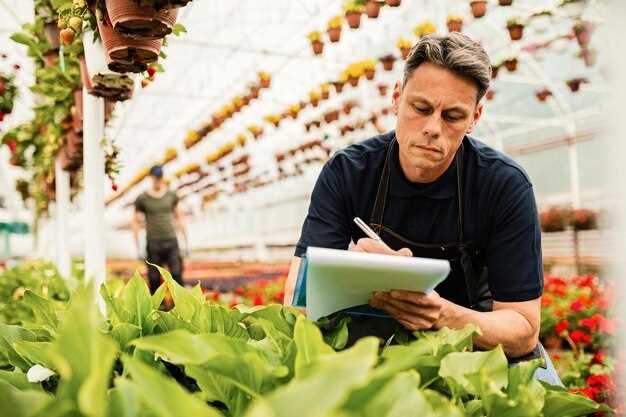Implement urban agriculture initiatives in your community to bolster local food security effectively. By reconceptualizing vacant urban spaces as agricultural hubs, you transform them into vibrant sources of fresh produce, reducing dependency on imported goods. For instance, in Detroit, urban farming has successfully brought fresh fruits and vegetables to areas previously identified as food deserts, showing measurable improvements in local diet quality and access.
Urban agriculture doesn’t just provide fresh produce; it also strengthens community bonds and fosters economic opportunities. A vital example is Chicago’s successful establishment of city-grown vegetable markets that not only offer fresh produce but also create employment for local residents. These markets engage community members, building a network that supports food resilience and economic stability simultaneously.
Moreover, urban agriculture projects enhance environmental sustainability. New York City’s rooftop farms demonstrate this by decreasing urban heat, producing renewable energy, and managing stormwater runoff. These farms also contribute to reducing pollution, with data showing significant improvements in local air quality, benefiting both residents and the broader ecosystem.
Innovative Urban Agriculture Models and Their Impact on Food Security

Promote vertical farming methods like hydroponics to maximize the use of limited urban spaces. Hydroponics requires up to 90% less water than traditional farming and can thrive without soil, making it a sustainable option for cities with limited arable land. Consider integrating aquaponics systems, which combine fish farming with plant cultivation, as they utilize byproducts from fish as plant nutrients. This closed-loop system increases urban food production efficiency and reduces waste.
Implement community-supported agriculture (CSA) programs to connect urban farmers directly with consumers. These programs ensure a steady revenue stream for farmers and heightened food security for citizens by offering fresh, local produce. Urban rooftop gardens contribute to food security by transforming underutilized spaces into productive land. Using lightweight, self-watering containers reduces irrigation needs, addressing water scarcity issues.
Promote urban beekeeping to enhance pollination, ensuring higher crop yields. Beekeeping also produces honey, a valuable product for local markets. Encourage the use of smart agriculture technology, such as IoT sensors and drones, to monitor crop health and optimize resource usage. This tech-driven approach allows urban farms to adapt quickly to changing conditions, minimizing crop loss.
| Model | Benefits |
|---|---|
| Vertical Farming | Efficient land use, water savings, soil-free cultivation |
| Hydroponics & Aquaponics | Reduced water usage, sustainable nutrient cycles |
| Community-Supported Agriculture | Direct farmer-consumer networks, stable incomes |
| Rooftop Gardens | Utilization of unused spaces, reduced water requirements |
| Urban Beekeeping | Enhanced pollination, honey production |
| Smart Agriculture Technology | Crop health monitoring, resource optimization |
Support urban policy changes that favor urban agricultural practices by providing incentives for green initiatives and urban farming startups. These models play a pivotal role in enhancing local food security, offering diverse solutions to meet the nutritional needs of urban populations while fostering sustainability.
Vertical Farming: Maximizing Limited Space in Urban Areas
Implement vertical farming techniques to effectively use urban spaces, transforming city infrastructures into productive agricultural zones. This innovative approach allows for stacked plant growth, accommodating more crops per square meter than traditional farming methods. By utilizing vertical farming, urban areas can achieve greater output with significantly reduced land use.
Adopt hydroponics or aeroponics systems to ensure efficient use of water and nutrients. These methods decrease water consumption by up to 70% compared to conventional agriculture, while delivering precise nutrient management, resulting in healthier plants and increased yield. Consider integrating automated systems for monitoring environmental conditions, which optimize plant growth by maintaining ideal temperature, humidity, and light levels.
Leverage existing structures like rooftops, abandoned buildings, or warehouses to establish vertical farms, thus reducing the need for new land development. This repurposing not only curtails urban sprawl but also brings agriculture closer to consumers, cutting down transportation costs and carbon emissions. Additionally, urban vertical farms can bolster food security by providing a constant supply of fresh produce, lessening dependency on external food sources.
Pursue community engagement and collaboration with local authorities to facilitate vertical farming projects. Encouraging partnerships with educational institutions can foster research and development, propelling innovations in agricultural techniques. Moreover, community involvement can help raise awareness about the benefits of urban agriculture and promote sustainable living practices.
Invest in renewable energy sources, such as solar or wind, to power vertical farms, enhancing their sustainability and reducing operating expenses. By tailoring the energy usage to match the intermittent nature of renewable sources, vertical farms can achieve near self-sufficiency, contributing positively to the urban ecosystem.
Ultimately, vertical farming not only addresses spatial limitations in urban settings but also contributes to building resilient food systems. By harnessing technology and community efforts, cities worldwide can transform into green hubs of sustainable and secure food production.
Rooftop Gardens: Utilizing Underused City Infrastructure
Transform underused rooftop spaces into lush gardens by implementing lightweight, modular systems that suit various architectural designs. Start by assessing a building’s structural capacity to ensure it can support the additional weight of soil and vegetation.
- Engage with structural engineers to determine load limits and safety requirements.
- Select plant varieties that thrive in rooftop conditions, such as drought-resistant herbs and shallow-rooted vegetables.
- Incorporate advanced irrigation systems, including drip irrigation and water recycling, to maximize resource efficiency and minimize water waste.
Rooftop gardens significantly improve urban environments by mitigating the heat island effect and reducing energy consumption. Create a microclimate that lowers surface temperatures, enhances air quality, and conserves energy by insulating buildings.
- Consider using reflective materials and light-colored plants to increase albedo and decrease heat absorption.
- Track energy savings through regular audits and adjust planting schemes as necessary to optimize insulation benefits.
These gardens contribute to food security by providing fresh produce directly to local communities. Establish community-based farming programs to support educational initiatives and foster urban horticulture skills among residents.
- Partner with local schools for educational workshops focused on gardening techniques and sustainability practices.
- Develop distribution channels for rooftop-grown produce, such as farmers’ markets and food cooperatives.
- Encourage community involvement through volunteer days and seasonal events.
Rooftop gardening offers a sustainable solution to enhance urban spaces while addressing food security challenges. Adopting these practices means not only increasing green areas but also transforming urban living by providing accessible, fresh food and environmental benefits.
Community Gardens: Building Local Networks and Social Capital
Encourage residents to join or establish community gardens in neighborhood vacant lots, as they can significantly enhance local food security while strengthening community ties. These gardens provide residents access to fresh produce, reducing dependence on external food sources.
- Strengthening Community Bonds: Community gardens create a natural meeting point for neighbors, fostering interactions and forming strong interpersonal relationships. These spaces encourage collaboration and shared goals, such as planting schedules and harvest events.
- Skills and Knowledge Sharing: Participants learn valuable agricultural skills from each other and local experts. Workshops can cover topics like sustainable farming methods, crop rotation, and seasonal planting techniques.
- Improved Food Security: By growing a variety of crops, these gardens contribute to a more resilient local food system. Residents enjoy access to nutritious food options close to home, promoting a healthier diet and lifestyle.
- Environmental Benefits: Community gardens support biodiversity by planting native species and avoiding chemical pesticides. They also promote sustainable land use, revitalizing urban spaces and enhancing the local ecosystem.
To establish a successful community garden network, consider organizing regular meetings and activities to maintain engagement. Seek support from local government and businesses for resources such as soil, seeds, and tools. This collaboration not only nurtures plants but also cultivates a thriving community.
Hydroponics and Aquaponics: Sustainable Water-Based Systems
Consider integrating hydroponics and aquaponics in urban agriculture to enhance food security through sustainable methods. These systems allow for efficient use of space and resources, making them ideal for urban settings where land availability is limited.
A hydroponic system grows plants using nutrient-rich solutions instead of soil, which significantly reduces water usage by up to 90% compared to traditional farming. This method not only conserves water but also accelerates plant growth due to direct access to nutrients. Common crops for hydroponics include lettuce, spinach, and herbs, which thrive in controlled environments with precise nutrient management. Implementing hydroponics can lead to year-round production, contributing to local food availability even in harsh climates.
In contrast, aquaponics combines aquaculture (raising fish) with hydroponics. Fish waste provides an organic nutrient source for plants, while plants naturally filter the water, creating a symbiotic cycle. Simple components like a fish tank, a water pump, and grow beds transform urban spaces into productive ecosystems. Popular fish species include tilapia and catfish, which adapt well to varying water conditions. This closed-loop system reduces waste and maximizes yield, enhancing sustainability.
To optimize these systems, maintain proper balance of nutrients and monitor pH levels regularly. Automated monitoring tools can improve precision in nutrient delivery, ensuring plant health and maximizing growth. Select plant varieties suited to your system’s environmental conditions to achieve optimal results.
Successful adoption of hydroponics and aquaponics requires community engagement and education. Workshops and online resources can empower individuals and communities to implement these systems effectively, fostering a sense of shared responsibility for local food security. Through collaborative efforts, urban agriculture on rooftops, balconies, and community gardens can transform cities into hubs of self-reliance, reducing dependency on distant food sources.
Real-World Examples of Urban Agriculture Initiatives

Explore the thriving urban agriculture landscape with initiatives like Brooklyn Grange in New York City, a leader in rooftop farming. They utilize over 2.5 acres of rooftop space to produce more than 50,000 pounds of organic produce annually, demonstrating an effective method to utilize urban spaces for food production. The project provides fresh vegetables for local markets and engaging educational programs for the community, highlighting the potential for urban settings to contribute significantly to food security.
Another noteworthy initiative is Detroit’s Hantz Farms. Transforming vacant urban land into productive green spaces, Hantz Farms addresses food deserts and revitalizes neighborhoods. By converting over 140 acres of neglected land, they not only boost local food security but also generate employment opportunities and promote environmental stewardship, illustrating how urban agriculture can simultaneously address multiple community needs.
In London, the Growing Underground project showcases innovation in urban agriculture by leveraging unused underground spaces. Farming beneath the city’s bustling streets, this initiative grows sustainable microgreens using hydroponics and LED technology, producing year-round without traditional environmental constraints. This approach not only maximizes spatial efficiency but also reduces transportation emissions by supplying nearby restaurants and retailers, emphasizing the ecological benefits of local urban food production.
Detroit’s Urban Farming Movement: Revitalizing Communities
Focus on integrating community engagement and education about local food production. Detroit’s urban farming initiatives demonstrate the profound impact of transforming vacant lots into productive spaces. Approximately 23 square miles of unoccupied land in Detroit now serve as the foundation for urban agriculture, boosting both the economy and access to fresh produce.
Invest in community-led projects to enhance sustainability. Groups such as the Detroit Black Community Food Security Network have taken root, developing farms that produce thousands of pounds of food annually. This reduces reliance on outside food sources and empowers residents to take control of their nutrition and health.
Support adaptive agricultural practices that tailor to urban conditions. Detroit farmers utilize innovative techniques, including permaculture and hydroponics, ensuring year-round food production. The evolution of these methods has increased yields and optimized the use of limited urban spaces, generating opportunities for hands-on education and training in modern farming techniques.
Strengthen local food systems to bolster resilience against food insecurity. The success of initiatives like Keep Growing Detroit, which supports over 1,500 farms and gardens, underscores the effect of collaboration between urban farms and local markets. This synergy not only enhances food distribution but also creates a more self-reliant local economy.
| Impact Factor | Outcome |
|---|---|
| Community Engagement | Increased participation in urban farming initiatives and local leadership development. |
| Sustainability Practices | Reduction of carbon footprint and enhancement of local biodiversity. |
| Food Security | Improved access to fresh, healthy produce for urban populations. |
| Economic Benefits | Creation of jobs and local business opportunities within the urban agricultural sector. |
Collaborate with educational institutions to expand outreach and impact. Programs designed for schools and after-school activities have introduced gardening and nutrition education to thousands of students. This connection fosters a new generation of environmentally conscious individuals with strengthened ties to their community’s wellbeing.
Singapore’s Sky Greens: Combining Technology and Tradition
Adopt vertical farming techniques like Singapore’s Sky Greens to increase urban agriculture efficiency. Sky Greens has integrated advanced technology with traditional farming methods, creating a sustainable model that maximizes space in densely populated areas. Their multi-layered structure rotates crops, ensuring even sunlight distribution, significantly improving crop yield compared to traditional flat farms.
Focus on the innovative use of hydraulic water-driven systems. This method reduces energy consumption by utilizing gravity and naturally available water, enhancing sustainability. The system’s low energy requirement is further supported by the use of locally available resources and recycling rainwater, emphasizing environmental responsibility.
Consider the diverse crop selection. Sky Greens successfully grows a variety of leafy vegetables, ensuring a steady supply of fresh produce, which strengthens local food security. This diversity not only meets local demand but also reduces dependency on imports, stabilizing market prices and availability.
Replicate community engagement practices exemplified by Sky Greens. They actively involve local communities through educational programs and farm visits, fostering a connection between city dwellers and their food sources. This approach not only raises awareness but also encourages healthier eating habits and local consumption.
Implement small-scale versions of Sky Greens’ model in other urban areas. By adapting their infrastructure and methods, cities can address space constraints and support urban agriculture initiatives, enhancing food security. This adaptable model demonstrates that combining technology with traditional wisdom can effectively tackle modern challenges in urban farming.
Havana’s Organopónicos: A Response to Economic Challenges
Focus on maximizing local resources by transforming vacant urban spaces into productive organopónicos. These urban gardens supply fresh produce to communities while significantly reducing dependency on imported foods. Cultivating these spaces with organic techniques not only boosts local employment but also encourages sustainable agricultural practices. Utilizing compost derived from local waste materials can maintain soil fertility, enhancing crop yields.
Community involvement stands at the heart of Havana’s organopónicos. By encouraging local participation, residents gain access to fresh, nutritious vegetables, which strengthens food security. Organize educational workshops on urban farming techniques and organic pest control to ensure that best practices are shared and implemented. This proactive exchange of knowledge empowers communities and fosters resilience against economic fluctuations.
Establishing a network of local markets helps distribute the produce from organopónicos swiftly, ensuring that it reaches consumers when fresh. These markets, ideally, will operate within walking distance of residential areas, making healthy food options easily accessible. Additionally, pricing strategies that take into account the economic realities of the community ensure affordability for all residents.
Government support plays a crucial role in the success of Havana’s urban agriculture movement. Policy initiatives that provide subsidies for seeds and tools help lower the initial investment barrier for new community gardens. Similarly, grants for research into optimizing crop varieties for urban conditions can lead to innovation and increased scalability.
Incorporating technology, such as efficient irrigation systems and solar-powered lighting for extended growing hours, further enhances productivity. These innovations help maintain a steady year-round supply of food, reducing gaps in food availability. As Havana’s organopónicos continue to evolve, they exemplify the power of locally driven solutions to transform urban landscapes and secure food systems amidst economic challenges.
Paris’ Urban Vineyards: Cultural Heritage Meets Modern Needs
Revitalize urban spaces by cultivating vineyards that blend cultural heritage with contemporary requirements. Paris, with its rich historical backdrop, offers exemplary case studies of urban vineyards that contribute to local food security while preserving cultural identity. Implementing similar projects can yield significant benefits.
- Utilize Available Spaces: Transform underused urban areas, such as rooftops and public parks, into productive vineyards. This adaptation not only beautifies the environment but also increases local food production.
- Leverage Tradition: Incorporate traditional grape varietals that thrive in urban conditions. Parisian vineyards often grow Pinot Noir and Chardonnay, which are well-suited to the city’s microclimate, ensuring quality harvests.
- Community Involvement: Engage local communities in vineyard activities. Initiatives like community harvesting and workshops foster a sense of ownership and pride while enhancing food literacy.
- Education and Training: Offer educational programs that teach sustainable viticulture practices. By collaborating with local schools and universities, urban vineyards can serve as living laboratories for learning and innovation.
- Boost Local Economy: Promote local wines produced from urban vineyards to support small businesses and tourism. Creating a direct link between producers and consumers strengthens community bonds and economic resilience.
By integrating these strategies, cities can seamlessly merge historic viticulture practices with modern urban needs, ensuring both cultural preservation and enhanced local food security.
Video:

Food Insecurity and Urban Farming
Food Insecurity and Urban Farming
Q&A:
How does urban agriculture contribute to local food security?
Urban agriculture enhances local food security by bringing fresh produce closer to consumers, reducing reliance on large-scale supply chains. This approach decreases transportation costs, allows for quicker responses to changes in demand, and can help mitigate the impact of potential food shortages or supply disruptions. Additionally, urban agriculture often involves community participation, increasing awareness about healthy eating and making nutritious food more accessible to urban populations.
What are some examples of urban agriculture initiatives successfully improving food security?
There are various successful examples of urban agriculture initiatives worldwide. For instance, Detroit has embraced urban farming with projects like the “Michigan Urban Farming Initiative,” which has turned abandoned lots into productive community gardens involving local residents. In Havana, Cuba, urban agriculture significantly increased food availability during the economic crisis of the 1990s by utilizing vacant urban land for food production.
What challenges do urban agriculture projects face in optimizing their impact on food security?
Urban agriculture projects encounter challenges such as limited space in densely populated cities, regulatory hurdles, access to water and resources, and potential soil contamination. Securing funding can also be a barrier, as these projects may require investment for land acquisition, infrastructure, and maintenance. Overcoming these obstacles often requires collaboration between local governments, community organizations, and private partners to support sustainable growth and maximize impact.
How does urban agriculture address environmental concerns while contributing to food security?
Urban agriculture positively impacts the environment by transforming underutilized spaces into green areas, which can improve air quality and reduce urban heat. It utilizes sustainable practices such as composting and rainwater harvesting, minimizing reliance on chemical fertilizers and reducing water waste. These environmentally friendly methods enhance urban ecosystems and contribute to a more sustainable urban food supply, creating a beneficial feedback loop for both the environment and food security.
Can urban agriculture be integrated into traditional agricultural education and training programs?
Yes, urban agriculture can be incorporated into traditional agricultural education by offering courses on urban farming techniques, community-based food production, and sustainable practices. Integrating urban agriculture into curricula provides students with practical skills applicable in urban settings, fostering innovation and resilience. This approach can prepare future generations of farmers and urban planners to better address food security challenges in cities, making food systems more adaptable and self-sufficient.
How does urban agriculture contribute to improving food security in local communities?
Urban agriculture enhances local food security by providing communities with direct access to fresh, locally grown produce. By cultivating food within city limits, urban farms reduce the reliance on long supply chains, thus making food distribution less susceptible to disruptions. Additionally, urban farming initiatives often lead to increased awareness and education about healthy eating practices among residents, fostering a more sustainable and self-reliant approach to food supply. Moreover, the presence of urban farms and gardens can encourage a sense of community and promote local economic development by creating jobs and stimulating local businesses related to agricultural activities.
